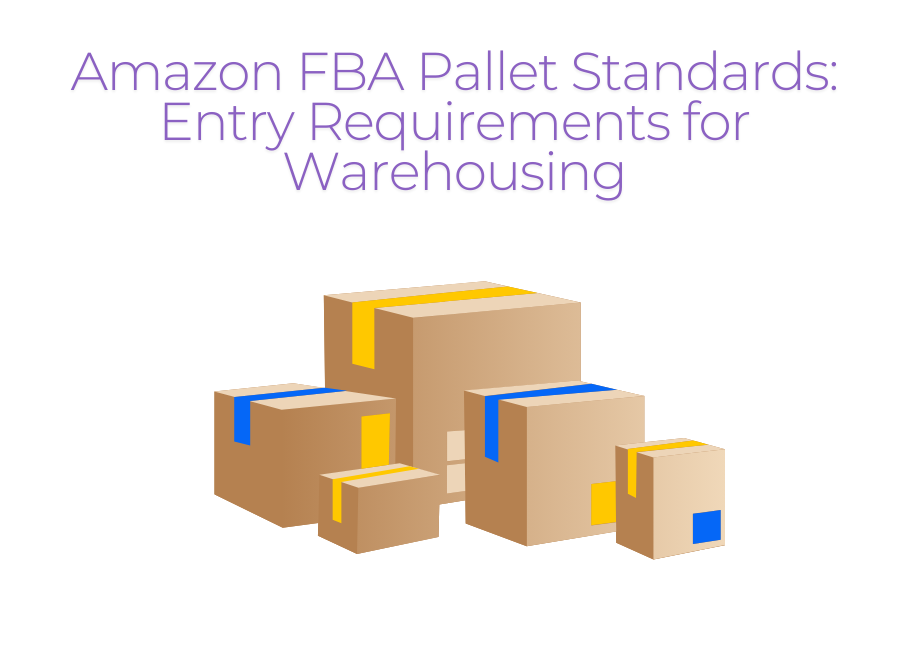FBA LCL Quote
FBA 40HQ FCL Quote
Hey there, fellow Amazon sellers! If you're diving into the world of FBA (Fulfillment by Amazon), you've probably realized that getting your products into Amazon's warehouses isn't as simple as just boxing them up and shipping them off. Trust me, I've been there, and I know how overwhelming those pallet requirements can seem at first. If you're working with a freight forwarder China to US, you’ll need to make sure everything is set up correctly to avoid any delays. But don’t worry – I'm here to break down everything you need to know about Amazon FBA pallet standards in a way that actually makes sense.
Why Proper Pallet Preparation Matters
Before we dive into the nitty-gritty details, let's talk about why this stuff really matters. Picture this: your products arrive at Amazon's warehouse, but they're not properly palletized. Best case scenario? Delays. Worst case? Rejected shipments and a hefty bill. I've seen sellers lose thousands of dollars simply because they didn't understand these requirements. But that's not going to be you – because we're going to get this right from the start.
The Real Cost of Non-Compliance
You might be thinking, "Come on, how big a deal can pallet requirements really be?" Well, here's the truth: Amazon processes millions of items daily, and they've optimized their warehouses down to the smallest detail. When you don't follow their guidelines, you're essentially throwing a wrench in their well-oiled machine. This can lead to:
Additional processing fees (sometimes up to $200 per pallet!)
Shipping delays of 1-2 weeks
Potential inventory stockouts
Account performance metrics taking a hit
Getting Your Pallet Basics Right
Let's start with the foundation – literally! The right pallet can make or break your FBA journey.
Choosing the Perfect Pallet
Ever tried wearing shoes that don't fit? That's what using the wrong pallet size is like for Amazon's warehouses. Here's what you need to know by region:
North America, Australia, Middle East, UK, India, Singapore: Go for 120 cm x 100 cm
Europe (excluding UK): Stick to 120 cm x 80 cm EPAL/EUR pallets
Japan: You'll need 110 cm x 110 cm
Pro tip: Those EPAL/EUR pallets need special markings on both sides – don't forget to check for them!
Material Matters
You can't just use any old pallet you find behind your local grocery store. Amazon has specific requirements:
Wood pallets must be heat-treated or fumigated (look for the ISPM15 stamp)
No broken boards or protruding nails (that's just asking for trouble)
Clean and dry (moisture is your inventory's enemy)
Mastering the Art of Stacking
Now that we've got our pallet situation sorted, let's talk about how to stack your products like a pro.
Height and Weight Guidelines That Actually Make Sense
I know it's tempting to stack your products as high as possible to save on shipping, but here's what you really need to know:
Height Limits:
US & UK: Keep it under 180 cm (that's about 5'11")
Germany, France, Italy, Spain: Max 170 cm
Japan: Has its own specific requirements (always check the latest guidelines)
Weight Limits:
Generally: Stay under 500 kg total (including pallet weight)
Japan: Can go up to 1000 kg (they're generous like that!)
The Art of Safe Stacking
Here's something they don't always tell you: how you stack matters just as much as how high you stack. Follow these tips:
Start with heavier items at the bottom (seems obvious, but you'd be surprised!)
Keep boxes aligned (no Jenga-style arrangements)
Use corner supports for extra stability
Leave no gaps between boxes (they're like cavities in your pallet's smile)
Packaging and Labeling: The Make-or-Break Details
This is where many sellers stumble, but I've got you covered.
Creating Label-Perfect Pallets
Every box needs:
FNSKU labels (think of these as your product's social security number)
Shipping labels (your package's passport)
Special handling labels when needed
And here's a golden tip: Place pallet labels on ALL FOUR SIDES. Why? Because warehouse workers aren't going to play Twister trying to find your labels!
The Wrap Game
Think of stretch wrap as your pallet's seatbelt. Here's how to do it right:
Use clear, sturdy stretch wrap
Start from the bottom
Overlap each layer by 50%
Go up and down at least twice
No ropes or straps (Amazon hates those)
Special Situations and Smart Solutions
When Standard Just Won't Cut It
Got oversized items? Products that don't fit the mold? Here's what to do:
Contact Amazon support BEFORE shipping
Request special handling instructions
Be prepared with alternative solutions
Document everything (seriously, everything)
Eco-Friendly Packaging Options
Let's face it – customers care about sustainability now more than ever. Here's how to go green:
Use recycled materials when possible
Opt for minimal packaging
Choose biodegradable options where available
Skip the fancy marketing inserts (Amazon doesn't want them anyway)
Final Tips for FBA Success
Communication is Key
Keep Amazon in the loop about special requirements
Document all communications
Take photos of your packed pallets (trust me, these can save you later)
Stay updated on policy changes
Common Mistakes to Avoid
Learn from others' mistakes (so you don't have to make them yourself):
Not checking regional requirements
Skimping on wrapping materials
Forgetting to label all sides
Mixing different SKUs without proper separation
Ready to Ship? Your Final Checklist
Before you send that pallet on its way, run through this quick checklist:
Correct pallet size for your region? ✓
Products properly stacked and secured? ✓
All required labels in place? ✓
Weight and height within limits? ✓
Stretch wrap properly applied? ✓
Special handling requirements addressed? ✓
Remember, success in Amazon FBA isn't just about having great products – it's about getting those products into Amazon's warehouses smoothly and efficiently. By following these guidelines, you're setting yourself up for successful fulfillment and happy customers.
Want to learn more about Amazon FBA success strategies? Drop a comment below or check out our other guides on inventory management and FBA optimization!



